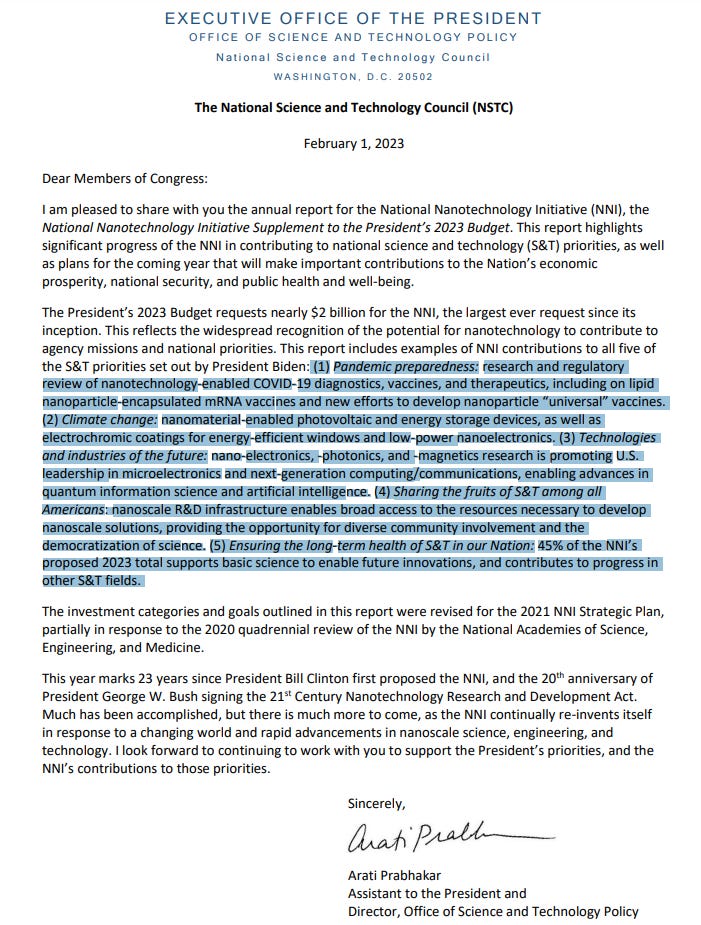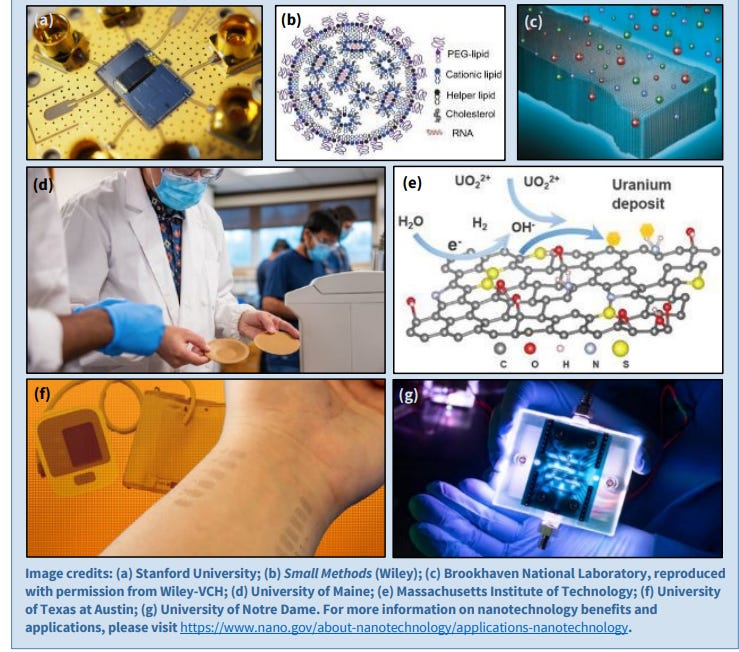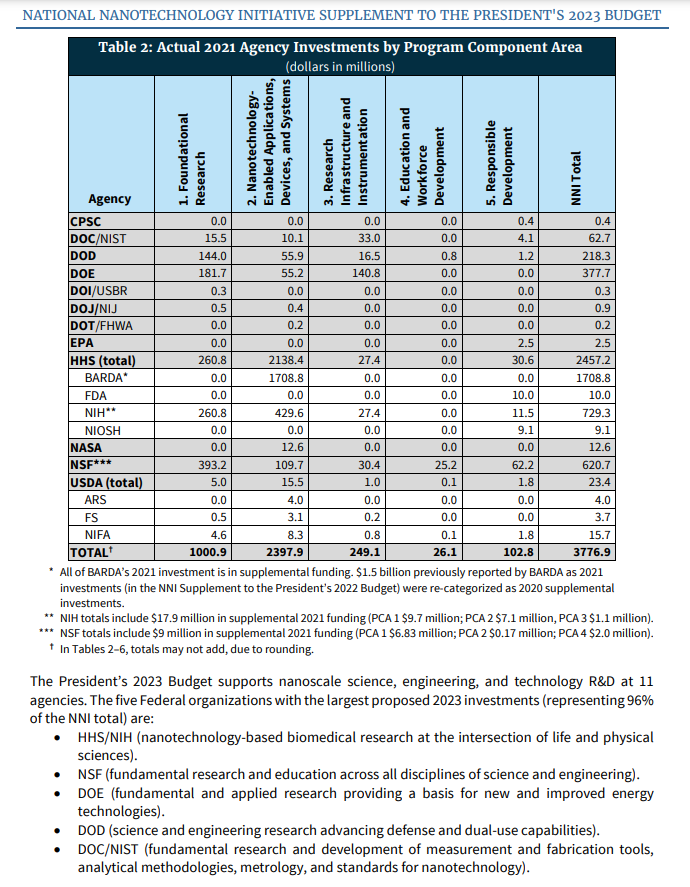09.06.23 (10)
ANA MARIA MIHALCEA, MD, PHD

Millions of people have been mislead in a concerted effort to divert attention from the study of nanotechnology in the C19 shots. Mainstream “freedom doctors” proclaimed that we see nothing but salt, sugar and cholesterol. The analysis of the hydrogel clots was omitted, and finally, only Mike Adams analyzed them – confirming that they are made of self assembly polymers with metals – aka hydrogel. Since then I and my colleagues have presented much experimental evidence to validate these results repeatedly and will continue to do so.
This means the nanotechnology had self assembled to grow to large sizes causing rubbery clots, not dissolvable by usual blood thinners.
The omission of the discussion of nanotechnology by the “freedom movement” -except a few – seems so obviously out of place. I point out, you cannot have freedom without truth. We should also remember the vehemence of prohibiting the discussion of graphene oxide by world experts like Astrid Stuckelberger in Stockholm at “Health Freedom Conference” – as obvious forced narrative control. Many people say it does not matter, that talking about spike protein is more acceptable and those people suppressing the discussion are still fighting for freedom. Hence why bother pointing out the nanotechnology and synthetic biology aspect since it would just “upset people”?
Except that is a shortsighted statement. If the whole world is deceived to believe there is only a spike protein posing danger to humans and that is the only focus of treatment, the real culprit of illness and blood clots of self assembly hydrogel nanotechnology is ignored – and people are getting hurt. Also, if the spike protein is not understood as a nanotechnological hydrogel enveloped entity, as Karen Kingston points out – treatment again is not directed at the correct target.
Sharing this message and exhaustive research was and is very important – for we needed to warn the world that treatment protocols must be adjusted and further research directed to mitigate the problem. Yet due to the reluctance to discuss this issue, much time in research and treatment modifications has already been lost. Shedding continues to be ignored by many medical practitioners, yet we know now how devastating it has been and is for the unvaccinated.
Politics continue to rule the way, as do narrative control and deception. Smoke in mirrors is everywhere, while there is an extinction level threat at our doorstep. As Dane Wigington spoke in a recent interview, we are inhaling 20 million nanoparticles and polymer filaments with each breath due to the geo- and bioengineering poisoning of our atmosphere, further compounding human nanotechnology contamination, in addition to pharmaceutical drugs and food supply.
To put the matter to rest, and point out the nonsensical nature of denial of the C19 bioweapon as nanotechnology, I would like to review the nanotechnology budget to the President for 2023.
I have highlighted passages of this document, pertaining to the C19 nanotechnology bioweapon that is discussed in many passages. I would like to show, that if even the office of the President admits that C19 shots are nanotechnology, then we should be able to agree there is nanotechnology in the shots. The point of contention is disolved.
Of note, many of the synthetic biology biosensing modalities, graphene oxide and nanoelectronics, brain computer interface, nanotechnology and graphene for water purification (hence contaminating the water supply), nanotechnology for food production and pharmaceutical delivery as well as every other aspect of life – are also discussed in this funding request. Note the plan to develop a nanotechnology universal vaccine.

Please see in the banner all of the agencies involved in the nanotechnology effort, including NIH, FDA, NASA, CDC and many more.

Executive Summary
The President’s 2023 Budget requests $1.99 billion for the National Nanotechnology Initiative (NNI), cumulatively totaling over $40.7 billion since the inception of the NNI in 2012 (including the 2023 request). This highest-ever request reflects the continued importance of investments that advance the fundamental understanding of and ability to control matter at the nanoscale, as well as the translation of that knowledge into technological breakthroughs that benefit society. Past research has led to applications in areas as diverse as clean energy, water purification, consumer electronics, textiles, aerospace, automotive, infrastructure, agriculture, and medicine. As highlighted in the research and development examples provided in this report, nanotechnology has become a broadly enabling technology and underpins technologies of the future such as quantum information science, artificial intelligence, biotechnology, and advanced manufacturing and computing. NNI investments in foundational nanotechnology research, electronic devices and systems, research infrastructure, and education provide a strong foundation for, and are synergistic with, the efforts to renew U.S. leadership in the semiconductor and microelectronics industries funded and authorized under the CHIPS and Science Act of 2022 (Public Law 117-167). Furthermore, as evidenced throughout the Covid-19 pandemic, nanotechnology has the potential to help address the biggest challenges facing the world. For example, in addition to pandemic preparedness, nanotechnology will play a role in combating climate change, providing food safety and abundance, delivering green energy technologies, and ensuring access to clean water. The NNI investments in 2021 and 2022 and those proposed in 2023 reflect a sustained emphasis on broad, fundamental research in nanoscience. Through this sustained support, the President’s Budget includes nanotechnology investments that will further the progress of the NNI to advance a world-class research portfolio, facilitate commercialization of nanotechnology-enabled applications, support a dynamic infrastructure and skilled workforce, and ensure responsible development of nanotechnology. This document serves as the annual report for the National Nanotechnology Initiative called for under the provisions of the 21st Century Nanotechnology Research and Development Act (15 USC §7501). The report also addresses the requirement for Department of Defense reporting on its nanotechnology investments (10 USC §2358).
Examples of nanotechnology innovations are illustrated below:
(a) quantum hardware fabricated using nanomechanical resonators made of lithium niobate;
(b) a lipid nanoparticle, which facilitates delivery of messenger RNA (mRNA) in COVID-19 vaccines and many other pharmaceuticals (!!);
(c) a silicon nanowire that is shaped at near atomic scale using a novel electron beam nanofabrication technique;
(d) a grease-proof and water-resistant disposable food container made of recyclable cellulose nanocomposites;
(e) a graphene oxide foam that filters uranium and other heavy metals from water;
(f) a graphene-based electronic tattoo that provides continuous mobile monitoring of blood pressure; and
(g) a gas sensor that mimics the sensitivity and selectivity of a human nose using nanoengineered materials.


NSF’s PCA 1 investments also include foundational research on sustainable nanomanufacturing, nanoelectronics (including semiconductors and future computing paradigms), nanosensors, and water sustainability. Special emphasis will be in several areas, including developing foundational concepts for new nanomanufacturing methods at confluence with digitization, biotechnology, artificial intelligence (AI), and cognitive sciences, including solicitations on Designing Synthetic Cells Beyond the Bounds of Evolution and Reproducible Cells and Organoids via Directed-Differentiation Encoding (RECODE) that will lead to scalable and reproducible cell and organ production for biomanufacturing and biomedicine applications. Other areas of emphasis will include discovering and using novel nanoscale fabrication processes and innovative concepts to produce revolutionary materials, devices, systems, and architectures to advance the field of electronics beyond Moore’s Law, including “Brainlike Computing” and “Intelligent Cognitive Assistants” research, as well as efforts in sensors and water. Focus areas will include the use of nanotechnology and nanoscale materials to build more sensitive, specific, and adaptable sensors, and the development of new sensors to detect engineered nanomaterials across their life cycles to assess their potential impacts, including the Biosensing and Biophotonics programs in the CBET Division. Research will also focus on taking advantage of the unique properties of engineered nanomaterials and systems to increase water availability, improve the efficiency of water delivery, and enable next-generation water monitoring systems. NIH advances creative, fundamental nanoscience discoveries to ultimately enhance health, lengthen life, and reduce illness and disability through a variety of mechanisms and approaches. The NIH nanotechnology investment portfolio supports basic research primarily through grants funded by many of the NIH institutes and centers. Current research efforts focus on fundamental research that will advance new medical diagnostics, therapeutics, and vaccines based on nanotechnologies. Due to the successful integration of nanotechnology-based R&D into numerous biomedical applications, scientists can propose ideas via broad funding opportunity announcements supported by a large number of NIH institutes, centers, and offices.
Fauci’s former department also works with nanotechnology vaccine development:
Multiple human immunodeficiency virus (HIV) vaccine basic research and development programs in the NIAID Division of AIDS support nanoparticle technology, including for example, protein nanoparticle and mRNA packaged into lipid nanoparticle (LNP) platforms being evaluated both in vitro and in appropriate animal models. These programs include: the HIV Vaccine Research and Design (HIVRAD) program, the Innovation for HIV Vaccine Discovery (IHVD) program, the Consortia for HIV/AIDS Vaccine Development (CHAVD) program, the Consortium for Innovative AIDS Research in Nonhuman Primates (CIAR-NHP) program, the Simian Vaccine Evaluation Units (SVEUs), and the Integrated Preclinical/Clinical AIDS Vaccine Development program (IPCAVD).
They are fully aware of self assembly and synthetic biology called bio/ inorganic hybrids also using quantum dots:
The Naval Research Laboratory (NRL) efforts in foundational research cover three main areas: materials/assembly, interactions, and nanosystems. In the area of materials/assembly, NRL is developing novel nanoscale materials through a combination of nanofabrication, growth, and directed chemical and biological assembly. Structures include both inorganic and bio/inorganic hybrids. The area of Interactions investigates the basic properties of nanostructures and how these materials interact with their environment. The goal of the nanosystems area is to develop functional systems of interacting nanomaterials. Examples of such nanosystems include entangled quantum dots, interacting nanophotonic systems, and bio/inorganic artificial enzymes.
I have been speaking about the synthetic biology hydrogel ( stretchable and biocompatible = hydrogel) being able to hijack our life force. Look here they know how to make the human be the battery for this technology, of course just for benign medical purposes:
One key example of this in the nanotechnology space is in the development of ultrathin, lightweight, and stretchable biocompatible nanogenerators that can harvest movement from the human body to power implantable biomedical devices, a technology that is now being leveraged at the National Heart, Lung, and Blood Institute (NHLBI) towards development of self-sustainable intracardiac pacemakers
“The Biomedical Advanced Research and Development Authority (BARDA) is a U.S. Department of Health and Human Services office responsible for developing medical countermeasures against bioterrorism, chemical, biological, radiological, and nuclear (CBRN) threats, pandemic influenza, and emerging infectious diseases” – the people who helped commercialize the C19 bioweapon also are working on novel biochemical sensors with minimal invasion:
BARDA helped support the validation and commercialization of lipid nanoparticle mRNA delivery technology through past and current support for Zika and COVID-19 mRNA vaccine development, and will continue to support commercialization of other uses of mRNA technology. Additionally, through its Division of Research, Innovation, and Ventures (DRIVe), BARDA will make investments towards commercializable products utilizing nanotechnologies for new modes of disease detection and diagnostics, including novel biochemical and mechanical sensors that can be used with minimal invasion, e.g., on a wearable device or novel analytical and diagnostic tools designed for at-home use.
Here is the DOD interested in SELF ASSEMBLY NANOSCALE TRANSDUCERS THAT PHOTOSTIMULATE ELECTRICAL ACTIVITY IN LIVING NEURONS – aka Mind Control as I explained in previous posts:
DOD supports R&D related to nanotechnology-enabled applications, devices, and systems in the department’s laboratories and extramural programs. For example, NRL is developing photonically coupled quantum dot lasers for ultralow-power, ultrahigh-speed neuromorphic computing. It is also developing new approaches to interface with and control biological systems, including “protonic” devices for actuating cells and self-assembled nanoscale transducers that can photostimulate electrical activity in living neurons. In addition, NRL is developing dimensionally confined biological catalysts and multiscale architectures for chemical catalysts.
Super Soldier programs continue. Sensing means monitoring of all bodily function and or thoughts. Augmenting Situational awareness and nano optoelectronic soldier capabilities means brain computer interface.
Planned research at the Army’s Institute for Soldier Nanotechnologies (ISN) emphasizes exploration of novel phenomena associated with fundamental processes (physical, chemical, biological) at the nanoscale or arising from nanostructural features in materials and devices, recognizing that nanotechnology entails much more than making materials that are very small and have very low weight. ISN basic research supports each of the six priorities of the new Army Futures Command.17 This includes 14 projects within three Strategic Research Areas (SRAs): SRA-1, Soldier Protection, Battlefield Care (including injectable nanoparticles for rapid hemostasis in treatment of wounds) and Sensing; SRA-2, Augmenting Situational Awareness; and SRA-3, Transformational Nano-optoelectronic Soldier Capabilities.
Here is nanotechnological modification of our food supply and creation of synthetic biology. Plant modification means we will eat nanotech GMO:
USDA supports foundational R&D in nanotechnology through programs at NIFA and the Forest Service. NIFA supports foundational research in advancing cutting-edge nanoscale science and engineering for solving significant agricultural and food system challenges. The scope of investigation includes discovery and characterization of novel nanoscale phenomena, processes, and properties that are relevant to agriculture and food; development of new platforms leading to novel applications; novel utilization and valorization of nanobiomaterials; exploitation of bio-nano interfaces; and exploration of nanotechnology-related aspects of synthetic biology and additive manufacturing technologies. For example, one project funded in 2020 (and continuing into calendar year 2024) is investigating the use of a non-infectious plant virus nanoparticle for delivery of mRNA into plants, allowing for a temporary change to the behavior of the plants without permanently altering their genetic material. This can allow plants to be temporarily equipped to resist disease, overcome drought conditions, or perform a new function without changing their DNA or creating regulatory hurdles for production.
Many more vaccines based on nanotechnology are planned – note its nano tech triggering the immune response. Plasmonic nanoparticles are graphene based and can create demons too via lower frequency signals as I explained in previous posts:
Ongoing nanotechnology projects falling under PCA 2 at NIH/NIAID include understanding and correlating the disposition of conserved coronavirus epitopes on subunit vaccines and designed nanoparticles with immunogens, which could lead to triggering different arms of the immune system for a more robust (i.e., broader/universal) immune response to coronavirus antigens within vaccine formulations; and developing an Epstein-Barr virus (EBV) nanoparticle vaccine that is currently in a clinical trial. NIAID is also investigating a variety of nanotechnology-enabled approaches to diagnosis, treatment, and prevention (e.g., vaccines) for malaria; developing a new class of engineered plasmonic nanoparticles to enable screening for lymphatic filariasis; and developing nanotechnology-enabled diagnostics, treatments, and vaccines for giardiasis, hepatitis C, Zika, dengue, rotavirus, enteroviruses, measles, chronic bacterial lung infections, otitis media, respiratory syncytial virus (RSV), and tuberculosis. NIAID also has awarded funding to four academic consortia as part of its efforts to develop pan-beta coronavirus vaccines that could protect against known and unknown SARS-CoV-2 variants as well as coronaviruses with emergence potential. NIAID is currently supporting the development of several nanoparticle-based vaccine candidates as part of the Institute’s priorities to develop a universal influenza vaccine. Many of these vaccine candidates utilize “plug and play” platform technologies that will also be beneficial for rapid response to other emerging viral pathogens. NIAID also supports studies to understand the competency of conserved influenza epitopes displayed on protein nanoparticles and virus-like particles, which could provide platforms that would be optimized for use as immunogens for broad seasonal and universal influenza vaccines.
At this time, there should be no further discussion regarding the presence of nanotechnology in the C19 shots. Even the government sees this as a valid scientific truth.
The dangers of nanotechnology including self replication, self and remote programming, swarming, DNA damage and oxidative stress to name a few. Nanotechnology must be discussed in a much broader context affecting all of life as is evident from this document. Treatment protocols for every human on this planet need to be adjusted to include decontamination from self spreading nanotechnology and synthetic biology.
The entire 84 page document can be found here:
National Nanotechnology Initiative
Dr. Ana’s Newsletter is a reader-supported publication. To receive new posts and support my work, consider becoming a free or paid subscriber.
Thanks to anamihalceamdphd.substack.com